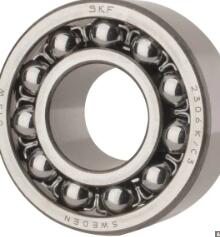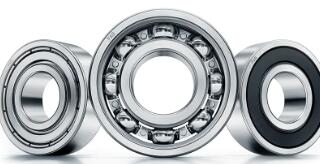Ball bearing vs sleeve bearing
This article explores the key differences between ball bearings and sleeve bearings, including their components, applications in industry, lifespan, and replacement costs.
Learn which one is best suited for your needs!
When it comes to choosing between two different types of bearings, it can be difficult to know which is the right one for your application.
In this article, we will explore the differences between ball bearing and sleeve bearing to help you make an informed decision.
There are several key considerations when choosing between a ball bearing and a sleeve bearing.
Noise is one of the primary factors when making this decision.
Ball bearings produce less noise than sleeve bearings due to their rolling motion on inner and outer tracks, reducing friction and vibration. A
s such, ball bearings are often preferred in applications that require low operational noise levels. Speed is an additional factor;
ball bearings allow for faster speeds than equivalent sleeve bearings, as they generate less friction. Durability is another consideration;
while both types of bearings can last for years with proper maintenance and lubrication, ball bearings typically have longer lifespans due to their greater resistance to wear and tear.
Cost is also important; while initial costs may be higher for ball bearings than sleeve bearings, they offer greater long-term value due to their increased lifespan and ability to run at faster speeds with less noise.
Ultimately, the bearing you choose should depend on your individual needs and preferences; each option has unique advantages.
This article dives into the differences between two types of industrial bearings: ball bearings and sleeve bearings.
We'll also explore how each type performs under different conditions, such as temperature changes and loads, so you can decide when selecting the suitable bearing for your needs.
Introduction
A. Definition of Ball Bearing

A ball bearing is a mechanical device that consists of small, round metal balls encased between two rings known as races.
The inner race is attached to a rotating shaft, and the outer race is connected to a fixed housing.
Ball bearings are used in many applications and provide low-friction rotational motion.
They can absorb radial loads, thrust loads, and combined loadings, depending on the type or design of the bearing.
Ball bearings come in various types, such as self-aligning ball bearings, cylindrical roller bearings, and deep groove ball bearings, among others.
Ball bearings can be made from different materials, such as steel, stainless steel, and ceramic depending on the application.
They also vary in size and shape depending on the specific need for which they are intended.
As well as providing support for axial forces, ball bearings also help reduce friction by allowing rotating components to move more freely and smoothly relative to one another.
This reduced friction helps improve efficiency in machines running at high speeds.
B. Definition of Sleeve Bearing

A sleeve bearing is a type of plain bearing that is used to provide linear or rotational movement between two parts.
It facilitates this movement by having a sliding action instead of the rolling action of ball bearings or roller bearings.
It has a low coefficient of friction and excellent wear resistance and can be lubricated to ensure smooth operation.
Sleeve bearings are usually maintenance-free and relatively affordable, making them desirable for many applications.
They are also bushings, journal bearings, or plain bearings and come in various sizes, shapes, and configurations.
They are most commonly used in automotive engines and transmissions, medical equipment, pumps and compressors, fan motors, and other industrial machinery.
Additionally, sleeve bearings are durable enough to withstand extreme temperatures and heavy loads over long periods with minimal friction.
Comparison of Ball Bearing vs Sleeve Bearing
- Noise: Ball bearings produce significantly less noise than sleeve bearings due to their precision construction and ability to reduce friction.
- Ball bearings are typically sealed devices, so they can't be lubricated, while sleeve bearings require periodic lubrication to run smoothly.
- This lubrication is necessary to reduce the amount of friction, which can cause high-pitched noises that spread through your equipment or system.
- Therefore, ball bearings are much quieter and often preferable for sound-sensitive applications such as medical equipment.
- Speed: Sleeve bearings usually offer more incredible speed than ball bearings due to their reduced friction and increased efficiency when transferring power from the motor to the moving parts.
- The lack of a seal allows for more efficient heat transfer, which means less energy is wasted in heat dissipation, allowing for higher speeds without damaging the motor or other components.
- Due to this, most high-speed applications use sleeve bearings rather than ball bearings for optimal performance.
- Durability: Ball bearings usually have greater durability than sleeve bearing designs because they can withstand harsher environments and still perform efficiently due to their sealed design.
- Furthermore, since they don't require lubrication like sleeve bearing designs do, they can work with less maintenance over time and extend their lifespan despite being exposed to extreme conditions or debris that could damage other bearing styles.
- In addition, ball bearing designs feature larger contact surfaces between the inner and outer races, which increases their loading capacity and longevity compared with open-style sleeve bearing designs.
- Cost: Sleeve bearing designs are typically cheaper than ball bearing units due mainly to their simpler construction and fewer components used during manufacture, as well as not requiring additional seals or special materials that would increase the cost or complexity of assembly processes associated with ball bearing units.
- However, while they may be cheaper initially, maintenance costs associated with regular lubrication requirements may make them ultimately more expensive over time when compared to properly maintained and serviced precision ball bearing systems which require less regular servicing or repairs due to higher levels of durability under operating conditions experienced by machines using them.
Advantages of Ball Bearings
- Low Noise: Ball bearings produce very little noise when used in a machine, making them an excellent choice for applications where noise is an issue. The rolling motion of the balls helps to reduce friction and thus significantly reduces the amount of noise generated. This makes ball bearings ideal for use in many different types of machinery and equipment, such as computers, laboratory instruments, and medical equipment.
- High Speed: Ball bearings are designed to operate at high speeds with minimal friction, allowing them to spin faster and more efficiently than other bearing designs. This makes them ideal for many high-speed applications such as electric motors, compressors, and pumps. By running at higher speeds than different types of bearings, ball bearings can help to increase the efficiency of machines while providing smoother operation with reduced vibrations.
- Long Life: One of the most significant advantages that ball bearings offer is their long lifespan compared to other bearing designs. Ball bearings are highly durable due to their construction, consisting of hardened steel balls that rotate inside a metal casing set into place by cages or retainers. The construction design distributes the load evenly over a wide surface area, making them less prone to wear or damage from shock loads and high temperatures than other types of bearing designs. As such, ball bearings can provide years of reliable performance with minimal maintenance required over their lifetime.
Advantages of Sleeve Bearings
- Low Cost: Sleeve bearings are incredibly cost-effective for many applications, requiring far less maintenance than other types of bearings. They also require fewer components to operate appropriately, reducing the overall ownership cost. In addition, since sleeve bearings are typically made from cheaper materials like bronze or brass, their initial purchase cost is relatively low compared to other bearing types.
- Low Noise: One of the most appealing aspects of sleeve bearings is their low noise output during operation. These bearings feature a simple design without complex parts that can create friction-induced noise, like some sophisticated bearing designs. As a result, they generate far less noise when running and provide a much quieter operation than other bearing types. Furthermore, due to their lack of moving parts, there is no need for lubrication which eliminates any additional noise created by lubricants splashing around inside the bearing cavity when in use.
Disadvantages of Ball Bearings
One major disadvantage of ball bearings is their high cost. Although ball bearings are incredibly useful in many machines and products, their precision, longevity, and ability to handle heavy loads can be quite expensive.
This is especially true for specialized ball bearings that are made from materials such as ceramic or stainless steel.
These materials offer great benefits, but they come with a higher price tag when compared to traditional bearing materials such as bronze or brass.
Additionally, installing ball bearings requires specialized tools and knowledge, which can add high labor costs to the overall expense of purchasing and using them.
If these costs are not considered during the budgeting process, then an unexpected financial burden may arise when using these components.
Furthermore, if the ball bearings are not adequately maintained or lubricated, they will wear out quickly and need to be replaced more often than anticipated, leading to increased costs.
Disadvantages of Sleeve Bearings
- Low Speed:Sleeve bearings have a lower speed limit than other types of bearings, designed for slower and steadier applications.
- This can be an issue if the machines being used operate at higher speeds or require higher precision.
- Additionally, sleeve bearings generate friction which can cause additional slowing of components.
- This can be mitigated with lubrication but will still negatively impact the overall speed of operation.
- Low Durability:Sleeve bearings are generally less durable than other bearing types, such as roller bearings, and require more frequent maintenance and replacement than their counterparts. The construction of a sleeve bearing makes it prone to wearing out quickly since metal parts make contact with each other when they rotate within the bearing housing, causing erosion and damage over time. In addition, regular lubrication is also necessary to maintain a sleeve bearing's performance, as over-lubrication will lead to contamination and corrosion. At the same time, under-lubrication can cause excessive wear on the parts involved.
Conclusion
In conclusion, ball bearings and sleeve bearings are two distinct types of bearing technologies.
Ball bearings tend to be low-maintenance and allow for higher RPMs due to their design, while sleeve bearings provide quieter operation and less vibration.
Ultimately, it is essential to research the advantages and disadvantages of each type before deciding which bearing is best suited for your application.





